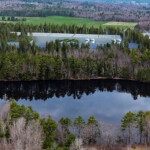Jane Bi is the Asia business development officer at the Global Aquaculture Alliance, a Portsmouth, New Hampshire, U.S.A. nonprofit that operates the Best Aquaculture Practices (BAP) third-party seafood eco-certification program. BAP certification promotes “science-based and continuously improved performance standards” for the aquaculture supply chain from farms to feed mills and processors.
Originally from China, Bi has worked with GAA since 2011 in the U.S. and in China. In an interview with SeafoodSource, Bi said the GAA hopes to expand the certification program in China with the aim of advancing responsible aquaculture in China. With China’s aquaculture sector consolidating and changing due to environmental and other pressures, BAP certification has fertile ground to expand in the country, and is adapting alongside the evolving market, Bi said.
SeafoodSource: China's aquaculture sector is clearly going through many changes, in particular, increased environmental enforcement. Has that increased interest among Chinese producers for assistance and advice from GAA?
Bi: Yes. GAA’s existing members and producer partners largely fall into a category of already adhering to strict environmental requirements and they are registered with the Chinese relevant authorities. The changes in governmental environmental policies haven’t affected this group much, but the changes have proved the value in doing things the right way. And we see increased interest to work with GAA in new species that are largely consumed in the Chinese market.
SeafoodSource: To which species are you referring?
Bi: There are many species that are of interest for BAP certification, so we are evaluating whether or not the current production practices can meet our standard requirements. Some of these species we’re evaluating are yellow croaker, turbot, grouper, bullfrog, and sea cucumber. We don’t know yet if we will be able to certify each of these species, but as we evaluate current practices, we can work with the industry to encourage more sustainable production practices that will allow them to be certified in the future.
SeafoodSource: Are you observing consolidation in the Chinese aquaculture sector? If so, do you expect this trend to continue?
Bi: Yes, we [have] noticed an increased consolidation in both the farming sector and processing sector. We see some small producers, farms, and plants went out of business. Most of our producer partners are still staying strong but they face increased pressure as a result of a more volatile market and a competitive business environment. Meanwhile, you see more investment coming into the seafood industry.
SeafoodSource: How is the market more volatile? When you say “competitive business environment,” are you referring to costs like labor, or to other issues?
Bi: The volatility we are seeing right now is primarily being fueled by the trade war between the U.S.A. and China. This is bringing a lot of uncertainty to the segments of the production sector who are focused on supplying the U.S. market.
SeafoodSource: Where do you see the investment – in production of new species? Or in distribution or marketing?
Bi: There are really interesting things happening throughout the supply chain. We are seeing more investments into large-scale production technologies that will fit China’s increasing need to conserve freshwater resources. We are seeing these investments for inland production through the development of more intensive systems like recirculating aquaculture and the in-pond raceway systems the Chinese government has been developing in cooperation with the U.S Soybean Export Council. We are also seeing investments in large offshore production models for marine production.
SeafoodSource: How do you respond to big trends like offshore aquaculture in China - are you offering guidance in this area?
Bi: Yes. We have an approach of identifying the leaders of a species and working with them to set examples for the rest of the industry. This results from a consideration of the consolidation trends in the aquaculture sector and China’s business culture of looking to the leaders to set the bar. For example, we have been working with the marine net-pen golden pompano aquaculture industry for the past couple of years and made progress. Currently, we have certified two pompano farms in Hainan – Xiangtai and Haifeng. We are impressed with their farms and glad to offer our input on standard practices for marine farming. While the pompano industry is still the more traditional near-shore marine net-pen farming style, it is still a new area for sustainable development. As the offshore industry in China continues to develop, we will look at engaging with them the same way we have engaged with the marine net pen industry.
SeafoodSource: What are some of the top priorities of GAA in China in 2019?
Bi: We will develop market support for BAP-certified seafood with assurance and increase consumer’s knowledge on BAP-certified seafood with assurance.
SeafoodSource: How do you increase consumer knowledge in China?
Bi: We rely on partnerships with the marketplace to convey consumer messaging. We provide videos, animations, and written content to our market supporters, and they can release it through their social media and display it at point of contact with consumers. As for other segments of the supply chain, there are exciting things happening at the market level. The “New Retail” concept is really being led by the Chinese marketplace. The consumer experience with seafood is being fundamentally changed. Virtually anyone can now pull out their mobile phone, look up their favorite retailer online, pick out the seafood item they want, walk into a store and have that item prepared for them to eat when they arrive. China will continue to be at the leading edge in regards to how seafood is marketed to consumers.
SeafoodSource: How are you educating Chinese consumers, so they trust and seek BAP-certified products?
Bi: We believe that education through the internet and mobile content is an effective and efficient way, so we are partnering with the e-commerce platforms. We also believe in targeted offline traditional in-store education, starting from some key locations with key partners.
SeafoodSource: How will BAP certification grow in China, given aquaculture is becoming more focused on the domestic market and less an export business? What is driving BAP certification in China? Is it pressure from newer retailers like JD.com, or are there more important forces driving certification?
Bi: BAP‘s growth in the traditional export markets is a result of providing value to targeted customers. If we stay true to doing that, we will find similar results. The changes typically start from the marketplace and retailers like JD.com, who provides incentives for the production chain.
SeafoodSource: What are some of the incentives JD offers? Are other Chinese retailers offering similar incentives?
Bi: We signed an NDA [non-disclosure agreement] with them, so I’m not certain that I can share it.
SeafoodSource: Do you expect Chinese retailers to become as important in increasing BAP certification globally as their Western counterparts like Tesco and WalMart?
Bi: Yes. Even though the Asian marketplace such as retail leaders and restaurant chain leaders are somewhat behind on grasping concepts such as seafood sustainability, they face the same challenges such as seafood food safety and quality as their Western counterparts. The BAP program is designed to offer one comprehensive solution to those challenges and we want the value from it to be used. Meanwhile, BAP is being challenged and changed by the needs here. We see the Chinese marketplace growing and changing and BAP with it.
SeafoodSource: How is BAP being changed by the needs in China?
Bi: The seafood market changes rapidly in China. BAP is already considering certifying new species we’ve never certified before. Some of these species might need specific changes to our standards for them to qualify – sea cucumber, for example. These are mobile animals that are not fed formulated feed, so how do we adapt our standards to make sure practices are environmentally sustainable, while meeting the unique biological characteristics of the animal? In addition to that, we see so many animals still sold live in China. This is not typically the case in other markets around the world, so as we work with producers of products like hairy crab, we need to adapt BAP to allowing for product to be packaged and shipped live from the farm. There will be new challenges presented on a regular basis that we will need to evaluate and determine if BAP can be part of the sustainability solution.






